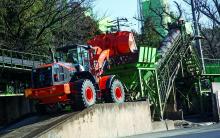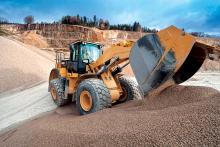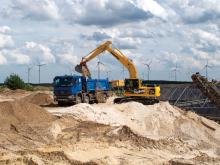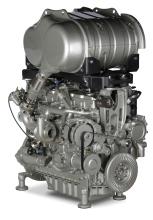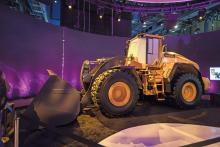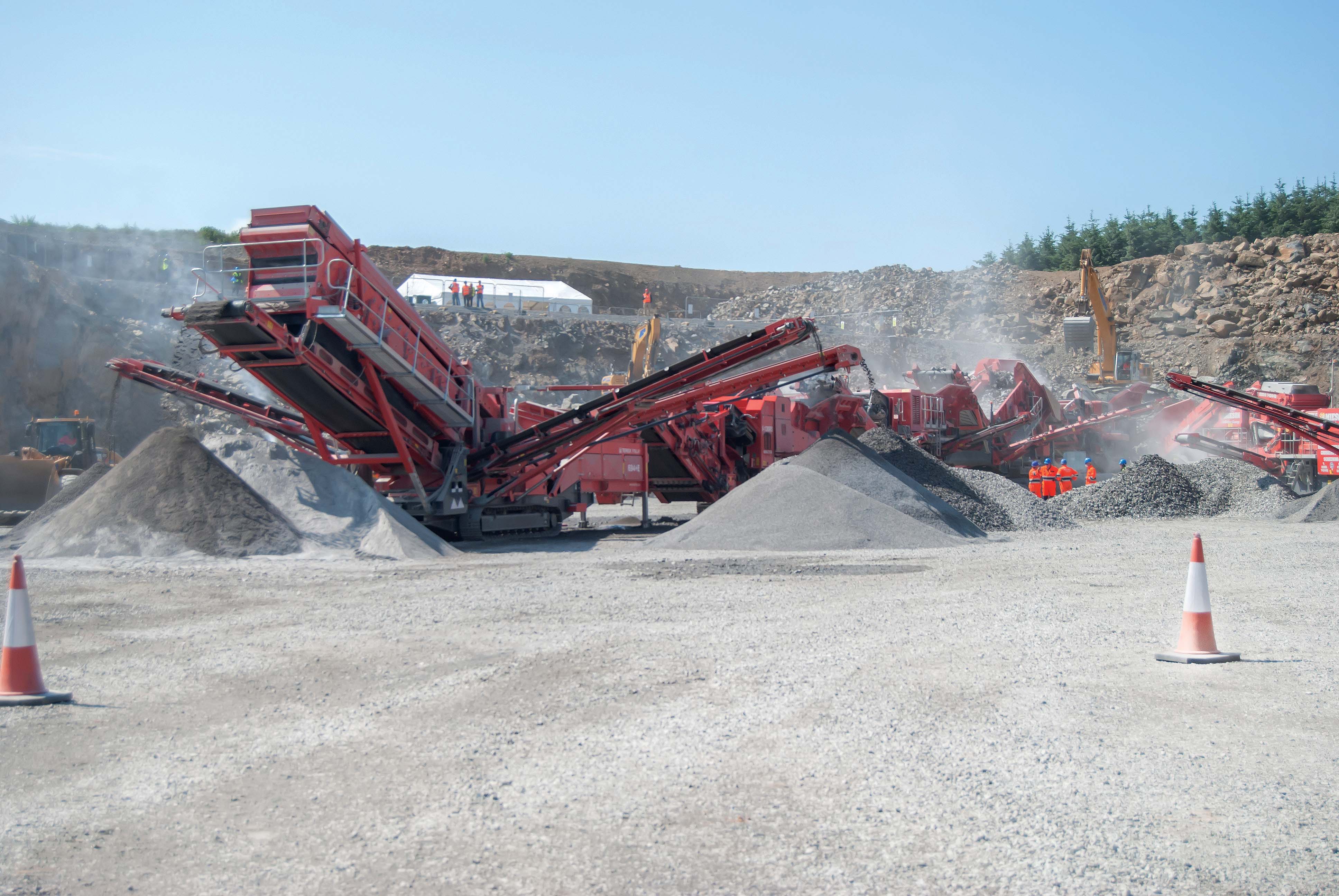
Alternative fuels and hybrid technology could create opportunities to seek out lower operating costs. We look at some of the options available to operators.
Available on a range of screens, Powerscreen’s solution affords an additional electric/hydraulic drive system, which can be connected to an external electricity supply once the machine has been set up, on site, creating a zero emissions machine.
The advantages might not be obvious, but where environmental, legislative and noise constraints are present, the switch to electrical power is the only choice.
There could also be instances where diesel fumes are not permitted, for example in an undergound operation, or where diesel fuel availability and quality are questionable.
And on sites where electricity is the only permitted energy source, the dual fuel option becomes the only choice.
With reduced refuelling requirements and less frequent engine servicing, there could also be a reduction in downtime, in addition to lower operating costs.
In 2012, through its dealer
The company operates a crushing and screening facility in Barka that uses available rivebed gravel to produce aggregates for asphalt and other materials, including granular sub-base (GSB) and aggregate base course.
The operator had a requirement to include electricity as a fuel option, and bought two Warrior 1800s with dual power capability. Both machines were commissioned at the Barka site and the plants are comfortably producing 400tonnes/hour of different size material.
Dynamic Gas Blending (DGB) is a dual fuel system being used by
Currently in use on the company’s high-horsepower engines, typically 1500-1850kW, the system is oil and gas industry-led. However, it is likely to be rolled out to other industries in the near future.
DGB enables as much as 70% of an engine’s diesel fuel to be substituted with natural gas, which is a clean fuel and in plentiful supply via shale gas.
Fuel mixing takes place in the air intake system, and enables the core diesel engine structure to remain unchanged, giving drill rig operators the option to run on the lower cost fuel.
Of lower calorific value than diesel fuel, engines using DGB require around 1.7 times more natural gas than diesel, to create the same output. Even so, it is already proving its worth and has the potential to deliver 30-40% fuel cost saving, as those that burn the most fuel also stand to save the most in running costs.
DGB can be retro-fitted to certain Cat engines, for example the 3512C, and can also be a factory-fit option.
However dual fuel systems are not the only option available to operators. Hybrid technology continues to develop at a rapid pace, offering the potential for some impressive fuel efficiency gains.
But given the rate of progress among the automotive sector with series and parallel hybrids, plus full electric vehicles, the construction equipment sector risks being left behind if the industry doesn’t continue to push forward a wider range of options.
While the bulk of hybrid systems on excavators and wheeled loaders make full use of electric motors to replace hydraulic components, there are examples of innovative hydraulic system technology.
And perhaps the best example is that fitted to Cat’s 34tonne excavator, the 336F. Equipped with an adaptive control system (ACS), a new design of valve block, the 336F has 16 individual metering valves that intelligently supervise restrictions and oil flows around the machine.
Unlike traditional main valve blocks, this one has been engineered to operate on any of the excavator’s oil circuits and can share oil between any two or more combinations of circuit. It is no longer a flow/return device for one spool – it is the intelligence of the entire hydraulic hybrid system and reduces losses by taking or sending oil to and from any other circuit that needs it, instead of dumping oil back to the tank.
There is also a hydraulic hybrid slew system, which allows energy to be stored and reused, as hydraulic energy from the slew motor is harnessed in large nitrogen accumulators that store and then release oil back into the slew motor as required.
These accumulators do such a good job of storing energy that the 336F hybrid does not require an active slew brake to slow the upper structure.
Only
Most construction equipment manufacturers base their technology on a single machine at present. Given the fuel saving and efficiency benefits of hybrid drive, rolling such tech out across multiple models would seem to be a logical move to benefit more customers.
And this is a route followed by
The larger machine uses two motor-generators to convert engine power to electrical power, which is fed to four individual, electric wheel motors via solid-state water-cooled electronics.
It is a more complex machine compared to the smaller 644K. The 3.2m³ 644K’s engine drives a generator that powers a single electric motor, which is installed as a torque converter replacement.
This electric motor then drives a three-speed powershift transmission, which uses traditional mechanical drives to the axles. Surprisingly, the 644K Hybrid continues with a Tier 4 Interim engine at present, while Deere’s other wheeled loaders have already made the switch to Tier 4 Final power units.
Hybrid technology remains an area where knowledge and expertise continue to evolve. And component suppliers too, are keen to make the most of a move to hybridisation.
Ricardo, for example, is continuing to develop its TorqStor high-speed flywheel energy storage system. This combines a modular high-efficiency carbon fibre flywheel with a magnetic coupling and gearing system, to provide a range of energy storage capacities for different machine applications.
The company is delivering TorqStor units to a number of OEMs for evaluation, which it hopes will lead to actual take-up and machine production.
Dana is currently developing a hydraulic hybrid system, called the Spicer PowerBoost. This captures wasted energy from driveline and hydraulic systems and uses the wasted energy to help power the machine. The company claims PowerBoost can reduce fuel consumption by 20-40%.
Hydrostatic energy is captured in an accumulator and then delivered to the drivetrain when required. Dana has conducted more than 1,000 hours of testing using a 16tonne wheeled loader and is now testing the system in a telescopic handler.
One hybrid electric drive system worth closer inspection is that from Oerlikon. Its electric drivetrain for wheeled loaders is predicted to reduce fuel consumption by up to 30% and is a complete electric driveline.
It starts with engine partner
Each wheel motor contains service brakes and allows regenerative energy recovery under braking, ideal for repetitive duties performed by wheeled loaders. A bank of ultra-capacitors is used to store and release electrical energy on-demand.
While the system is still in development, Cummins engineers expect the QSG engine to operate as a constant speed engine, in a sweet spot of around 1,200rpm while delivering 400hp (294kW) for electrical energy generation.
The hybrid system is currently being installed in an
It is thought the individual electric wheel motor system could eventually lead to the development of independent suspension for wheeled loaders.
As clever as these hybrid systems are, their adoption is only likely to succeed when machine owners and operators identify that the fuel consumption benefit outweighs any additional purchase and operating costs.
“We will be demonstrating these machines running both on diesel power and also driven electrically to demonstrate to customers the functionality of these models,” says Nigel Irvine, Terex Finlay sales and marketing director.
“Our engineering and new product development teams have worked extremely hard in getting these machines into production, and the Hillhead show is the perfect platform from which to introduce the machines to the market place.”

